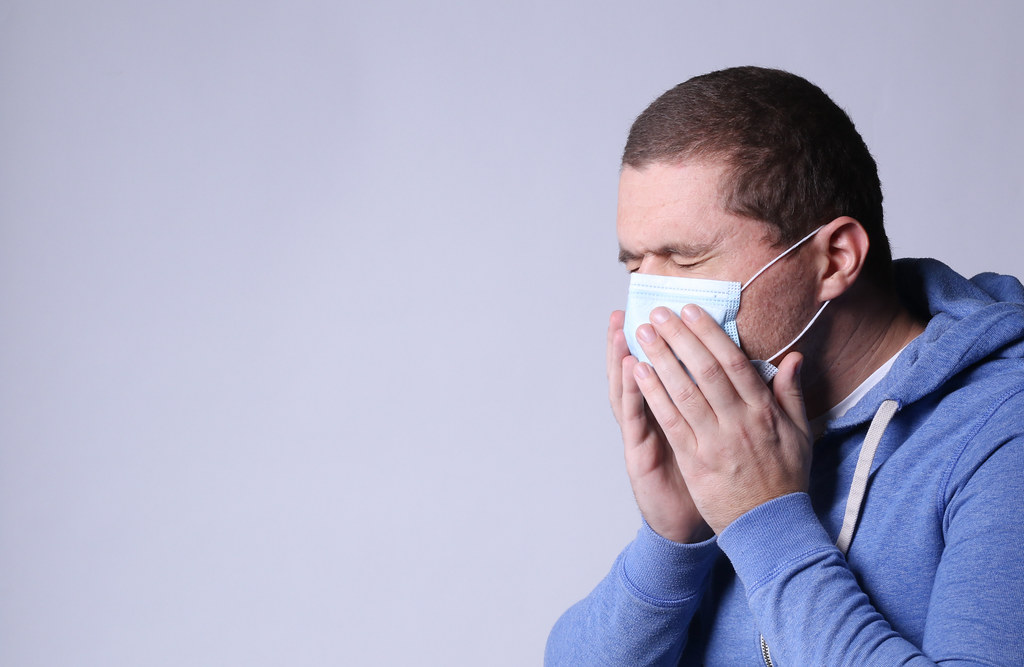Most lung diseases and acute bronchitis have similar symptoms of fever and cough, with some minor differences. These symptoms are also associated with pertussis.
1. Fever and cough
Viral diseases are particularly contagious when they combine fever and cough because transmission by droplets is common. When the patient coughs or sneezes without covering their nose and mouth, the particles expelled can contaminate another person if they are less than one meter away.
Note: if cough is almost constant in these pathologies, there are some rare cases of pneumopathy without fever or cough.
2. Bronchitis and pneumopathy
Pathologies such as bronchitis or pneumopathies associated with fever and cough have some particular characteristics.
– The cough is almost systematic.
– These pathologies mainly concern children (bronchiolitis) and the elderly.
– The cough is generally accompanied by sputum of varying degrees (depending on the subject and the stage of the disease).
However, we note that :
– In acute bronchitis, the cough will be either dry or expectorant, but rarely both at the same time. It is due to inflammation of the bronchial tubes, which leads to difficulty breathing and a fever that peaks at 38°C (not higher).
– In acute lung disease, the cough will be painful and associated with right chest pain. The accompanying fever is high and leads to an altered general condition. In some cases, the pathology is progressive.
3. Colds
Colds are viral infectious diseases that frequently combine fever and cough.
Indeed, among the symptoms found, we can count :
– cough and sore throat;
– a slight fever
– sneezing;
– runny nose and nasal congestion
– fatigue and loss of appetite, sometimes with headaches.
Because coughing can spread the virus that causes the cold, it is important to make sure you cough and sneeze into the crook of your elbow.
Note: generally benign, the common cold can be dangerous for certain people at risk, such as asthmatics, people with respiratory insufficiency, children, the elderly, and people who smoke or drink.
4. Croup
Croup is a laryngotracheobronchitis which, as its name indicates, affects the larynx, trachea, and bronchi.
This disease causes, among other things:
– a “barking” cough;
– a stridor (high-pitched noise when breathing coming from the larynx or the trachea) and a dysphonia (voice modification);
– Increased respiratory discomfort at night;
– a fever similar to that observed in the case of a cold.
5. Influenza

Influenza is another disease that is spread primarily by respiratory secretions released during coughing and sneezing:
– There is a dry cough, and the throat is sore.
– The disease is also marked by a high fever, chills and aches and pains, headaches, loss of appetite, etc.
Here again, avoiding transmission of the virus is essential: protect your mouth and cover your nose when sneezing.
6. Sinusitis: slight fever and cough
Sinusitis (inflammation of the sinuses) also combines fever and cough, with some specific characteristics:
– the fever is mild ;
– a wet cough.
Sinusitis is accompanied by pain in the sinuses (increased pressure) and a decreased sense of smell.
7. Pneumonia
Pneumonia is a pathology that results from an infection and is marked by a high fever (between 39 and 40°C).
Coughing is usually severe, coughing fits are frequent, and sputum is particularly profuse from the lungs.
Read more:
7 Foods that Damage Your Kidneys
Why and When to See a Podiatrist
Testosterone Growth Hormones for Bodybuilding – Should you buy them?


